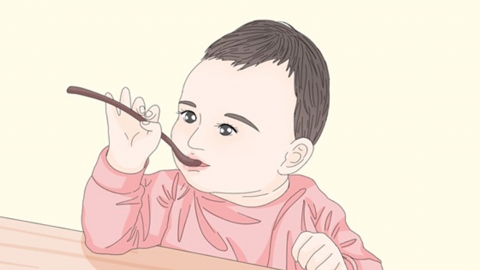Why does my baby have a fever and excessive eye discharge?
Generally speaking, fever refers to an elevated body temperature. Increased eye discharge in babies with fever may be related to dehydration, normal eye secretions, conjunctivitis, lacrimal duct inflammation, or common cold, among other factors. If the baby experiences any discomfort, timely medical consultation is recommended. A detailed explanation is as follows:

1. Dehydration
When a baby has a fever, excessive body fluids can be lost. If fluids are not replenished promptly, dehydration may occur, potentially leading to increased eye discharge. Parents should ensure timely hydration to maintain fluid balance and reduce eye discharge.
2. Normal Eye Secretions
The meibomian glands secrete a substance similar to oil that protects the eyes. This secretion can naturally form eye discharge. Maintaining eye hygiene by gently wiping the eyes with warm water, from the inner corner outward, can help prevent excessive accumulation of secretions.
3. Conjunctivitis
Conjunctivitis is usually caused by bacterial or viral infections, which may enter the eyes due to inadequate disinfection of the baby's personal items. These pathogens can trigger an inflammatory reaction, increasing eye secretions and causing eye discharge. Inflammatory factors may also stimulate the hypothalamic temperature regulation center via the bloodstream, leading to elevated body temperature. Symptoms may include redness, pain, and photophobia in the eyes. Treatment may involve medications such as erythromycin eye ointment, ofloxacin eye drops, or levofloxacin hydrochloride eye drops, as advised by a physician.
4. Lacrimal Duct Inflammation
Lacrimal duct inflammation may be caused by bacterial infection, which leads to impaired tear drainage due to inflammation. As the inflammation worsens, eye discharge increases and may be accompanied by fever. Symptoms such as tearing and lacrimal duct blockage may also occur. Treatment may involve medications such as gentamicin sulfate eye drops, tobramycin eye drops, or ciprofloxacin hydrochloride eye drops, as directed by a physician.
5. Common Cold
A common cold may be associated with factors such as seasonal changes or insufficient warmth. Pathogens can stimulate the immune system to secrete inflammatory factors, resulting in fever. Additionally, pathogens may spread through the nasolacrimal duct to the eyes, increasing ocular secretions. Other symptoms may include coughing, runny nose, and nasal congestion. Treatment may involve medications such as children's cold granules, children's paracetamol and amantadine granules, or heat-clearing and detoxifying granules, as advised by a physician.
In daily life, parents should ensure timely hydration for the baby, maintain eye hygiene, and provide a healthy living environment and balanced nutrition to enhance the baby's immunity and prevent diseases.









